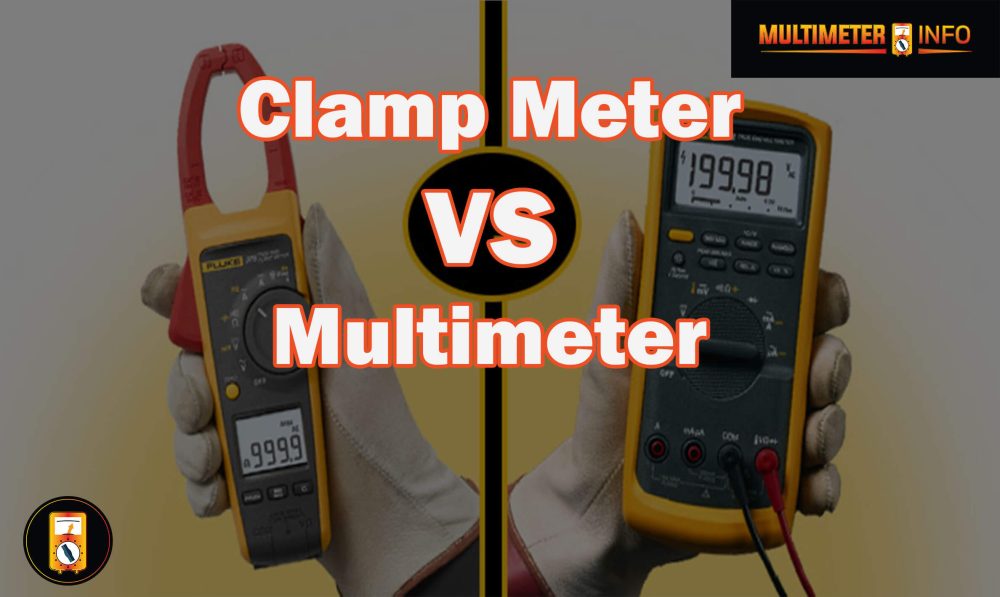Do you have a wiring project that requires you to identify the neutral wire? Identifying the neutral wire in your electrical system requires close inspection and is essential for any wiring job. There are few reliable methods for this, but using a multimeter is one of the most straightforward and accurate. A multimeter can quickly determine whether a circuit is active or passive. This blog post will show you how to use a multimeter to identify a neutral wire so you can start your project immediately!

What is a Neutral Wire?
A neutral wire is an electrical wire with white or Gray outer insulation and is connected to the grounding system of a house. In most residential electrical systems, the neutral wire carries power from the electricity source back to the panel when current is not used. This ensures that the circuit remains balanced and does not overload outlets or other devices connected to it.
The neutral wire also helps dissipate any excess energy so that there are no electric shocks when handling electronic devices. It is vital for homeowners to be aware of their home’s wiring and know where their neutral wires are located to ensure safety when working with electricity. Properly installed and maintained neutrals will help protect your family from harm caused by faulty wiring or poor maintenance.
Types Of Wires:
The live wire is the power wire, and it carries current from the source to all connected outlets or appliances in a circuit. It is usually black or red. The neutral wire provides a return path for the current, allowing electricity to be returned to its source. This wire is typically white. The ground wire helps protect against electrical shock by providing a direct connection to the earth’s ground when an appliance becomes faulty and unexpectedly releases electricity into the air. This wire is usually green or copper-coloured, depending on the wiring system.
It is essential to understand which wires are which before attempting any work with home electrical circuits. Mixing up live/neutral/ground could cause sparks and potentially create hazardous situations. Remembering that a qualified electrician should only do all electrical work is essential. Working on home electrical systems without proper knowledge and tools can lead to serious harm or even death.
When in doubt, it is always best to contact a professional. Keep yourself safe and ensure you know what types of wires are involved in any circuit before attempting your repairs!
Required Tools:
- Multimeter
How To Identify Neutral Wire With A Multimeter
Set your multimeter to its highest voltage range and ground your black (negative) probe on a metal surface. After doing this, place the red (positive) probe on each exposed wire ending that may be connected to the neutral wire. No reading should be on your multimeter’s display screen if it is a neutral wire. In other words, if there’s no reading on your multimeter, one of the wires is the neutral wire.
1. Open Wall Socket:
Begin by ensuring the wall socket is open and all current is turned off before starting work. This can be done by switching off the main circuit breaker in the fuse box or unplugging any devices connected to the socket.
2. Set Multimeter To Voltage:
Next, set the multimeter to voltage and ensure it is working correctly.
3. Place Multimeter Probes On Wires:
Once the multimeter is ready, place one probe on each of the wires in the wall socket and note which wire has a higher reading than the other (since neutral wires generally carry less voltage).
4. Evaluating Results:
Once the probe readings have been taken, compare the results to what is expected of a neutral wire. If the wire has a reading of 0-volt on the multimeter, it can be safely assumed that this is the neutral wire. On the other hand, if it presents you with either 120V or 240V (depending on your region), this likely indicates it’s a hot wire.
Following these steps and correctly using a multimeter, you should quickly identify which wire in your wall socket is neutral. It is essential to take all necessary safety measures when attempting any electrical work. Additionally, if in doubt or feel overwhelmed by any project, it is always best to call an electrician for assistance.
Frequently Asked Questions:
Once you have connected your probes to the respective terminals, you can use a multimeter to check for continuity. If the multimeter reads 0 ohms, the neutral wire has been identified correctly. For further assurance, you can also check whether the voltage between the hot and neutral wires reads close to 120 volts.
Yes, using a multimeter is perfectly safe when used as directed. However, ensuring that you only work with electrical circuits that have been properly de-energized and follow all safety precautions is vital. It is also recommended that you wear protective clothing, such as insulated gloves and safety glasses, when dealing with any live electricity.
If your multimeter reads a resistance greater than 0 ohms, it may indicate that you have identified the wrong wire. In this case, it is best to double-check your connections and try again. Alternatively, you can consult a certified electrician to identify the neutral wire correctly.
Yes, it is vital to keep in mind that the colour of wires does not always indicate the function. Instead, it would help if you used your multimeter to ensure accuracy and safety. You should also take all necessary steps to avoid creating a dangerous situation by double-checking all connections before applying any power.
No special tools are required – just a primary non-contact voltage detector (NCVD) and a standard digital multimeter will suffice. Make sure to read and understand the user manual before using either tool. It is also highly recommended that you consult with an experienced electrician whenever possible if you are unsure about anything.
There is no special training required to identify a neutral wire with a multimeter; however, if you are ever unsure about your connections or have any safety concerns, it is recommended that you consult with an experienced electrician. Furthermore, many local municipalities may require you to obtain a permit and/or pass a safety inspection before beginning electrical work.
Yes, taking precautions when working with live electricity is essential because it can be dangerous if not handled properly. Always de-energize any circuit before beginning work, wear protective clothing such as insulated gloves and safety glasses, double-check all connections before applying power, and, whenever possible, seek the advice or assistance of an experienced electrician.
Conclusion:
Finally, it is critical to use a multimeter to safely and accurately identify the neutral wire of an electrical circuit. It detects current, measures voltage, and tests resistance without endangering yourself or your property. To determine which wire is neutral in any given circuit, follow the steps outlined above, taking care and caution when testing with a multimeter. With this knowledge, you can confidently complete future electrical projects!




